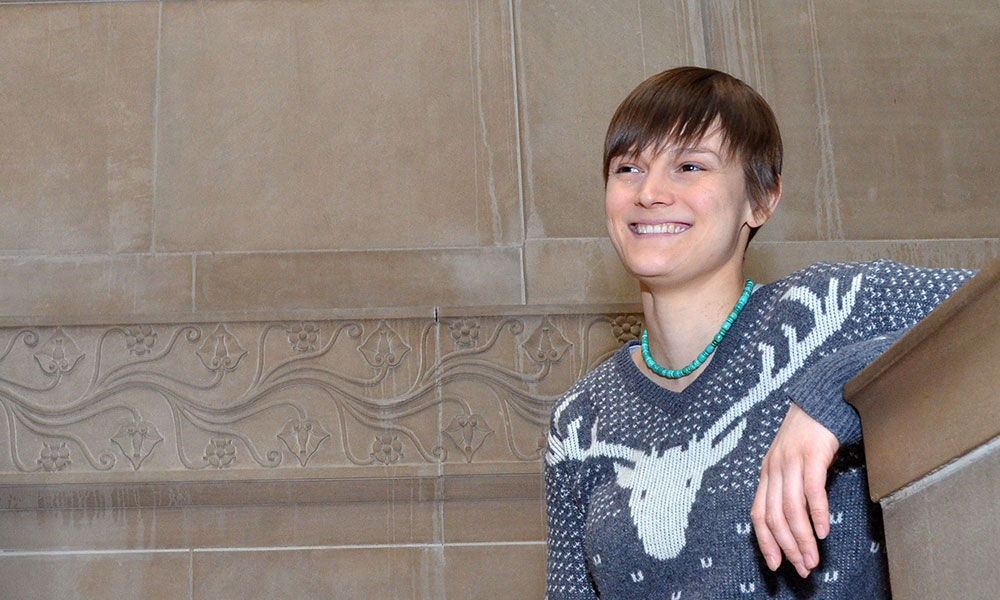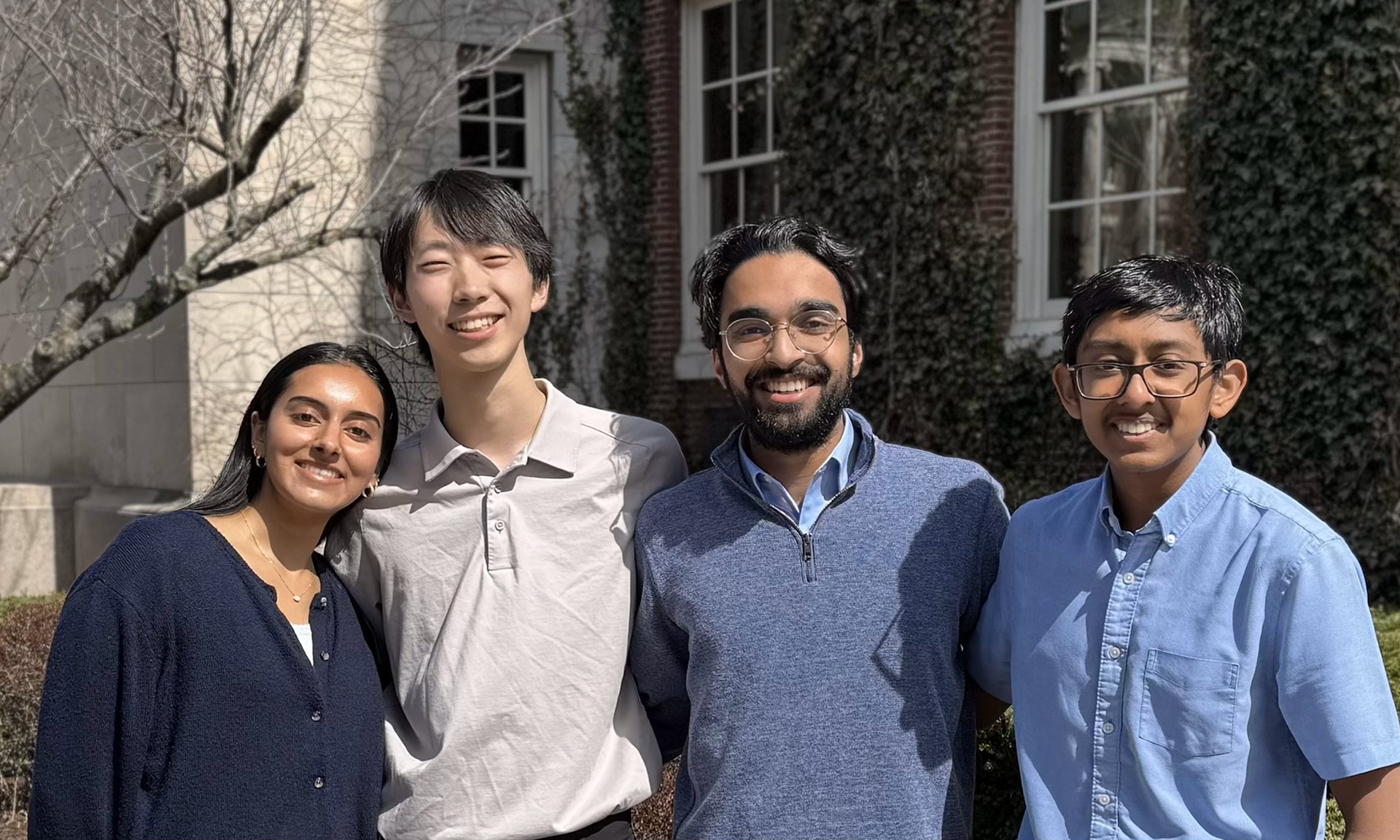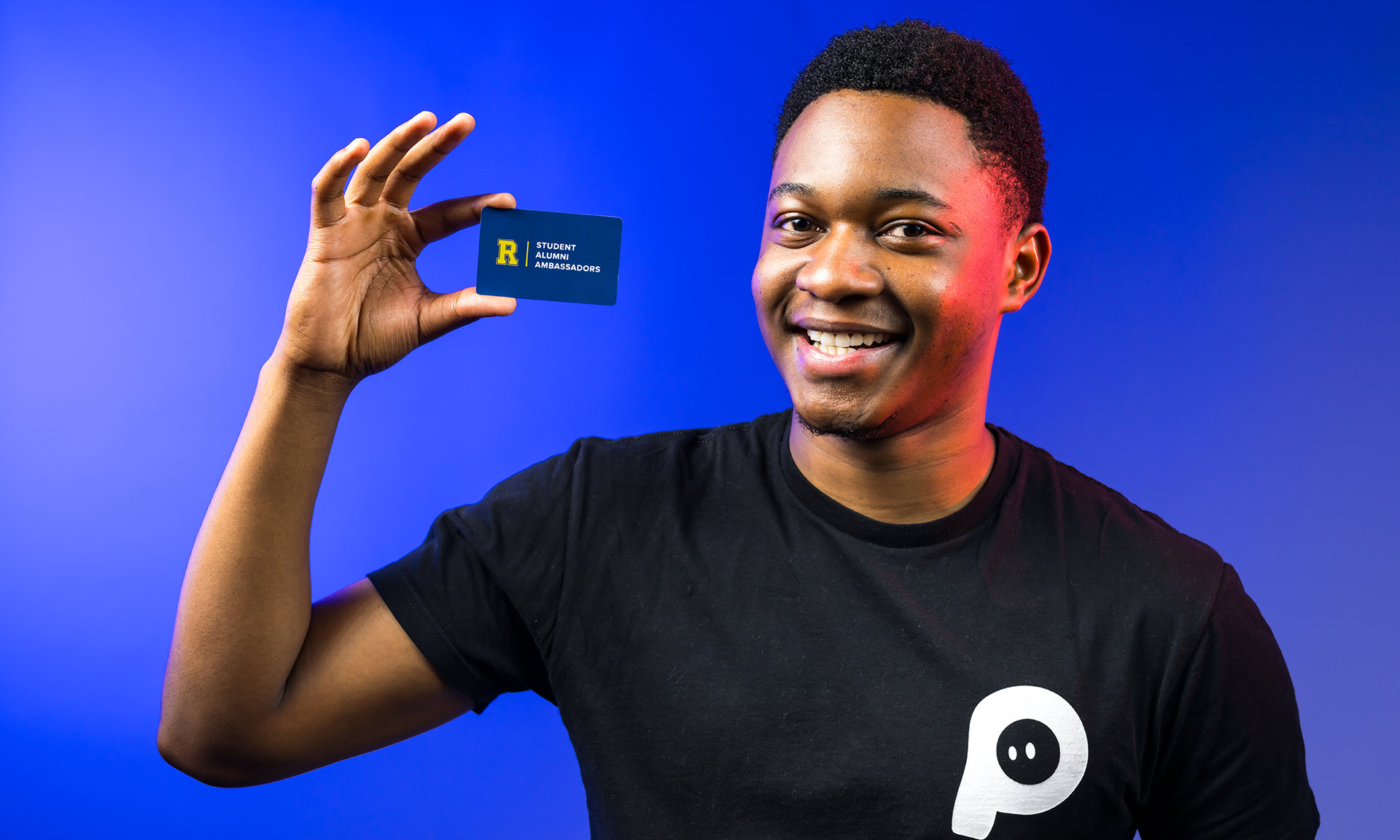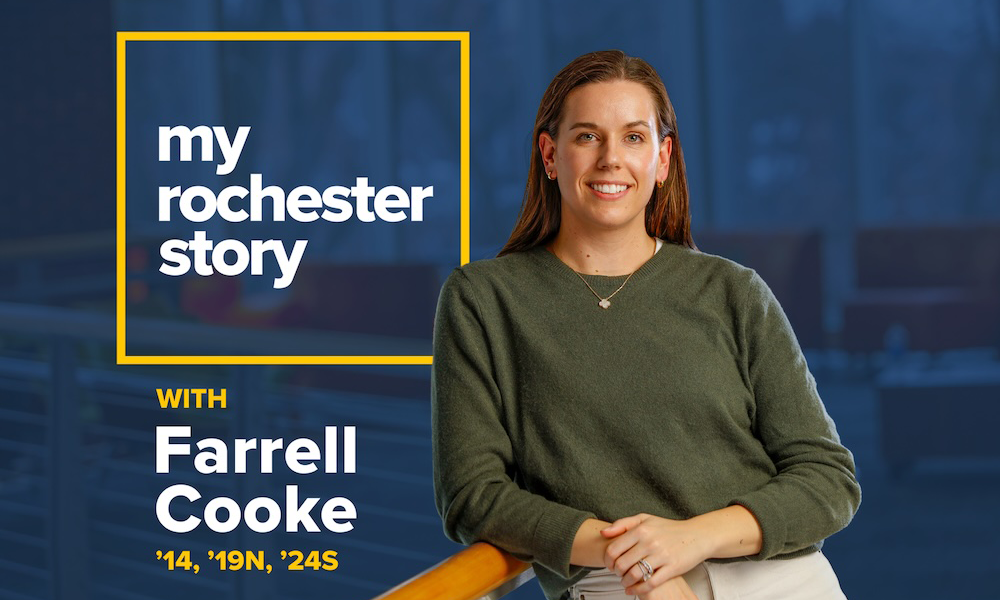Juliana Conley ’20 is pursuing a path of study that is less traveled at the University of Rochester. But then, so too is the road that brought her here.
Her choice of major is a culmination of careful thought, advice well taken, Venn diagrams, western wildfires, and a totally unexpected, seven-year detour away from undergraduate study.
All of this has given the 29-year-old a very clear idea of what she wants from her college experience—and the university’s interdisciplinary program in geomechanics will give her an opportunity to achieve it.
“It’s not been a conventional path to being a first-year student at the University of Rochester, but I’m really happy to be here,” Conley says. “This has exceeded all of my expectations.”
Starting out, heading West
A native of Concord, New Hampshire, Conley was lured westward after graduating from high school. She enrolled at the Flagstaff campus of Northern Arizona University, where she intended to study mechanical engineering. But when she got to Flagstaff, she started to learn firsthand how daily life can be affected by the threat—and the reality—of wildfires.
“My neighborhood went into pre-evacuation twice. I saw a number of fires and the destruction they caused,” Conley explains. She spent a summer as a Forest Service intern working near a community that had lost 400 homes in a wildfire. “I saw up close the impacts on both the ecosystem and on the people, who live in this shadow of fear each summer, wondering what will happen if a fire comes.”
She switched her academic focus to forest ecology. And then came the detour.
In a collision with another bicyclist on campus, Conley suffered a serious concussion in addition to a back injury. She took some time off. “It ended up taking seven years for me to come back,” she says.
Making connections
In retrospect, the detour may not have been such a bad thing. After taking a job in Santa Fe, New Mexico, she became involved with the Friends of the Santa Fe National Forest, a fledgling nonprofit organization that works with rangers to preserve the forest and educate the public about forestry issues.
As a member of the board, she helped involve young people in trail crews and a youth advisory board. She also attended several public meetings, where she learned about land management. “I enjoyed this nonprofit work, but also realized that if I were going to go back into trying to solve forestry problems, I would want to do it with a more quantitative approach.”
That’s the approach taken at Los Alamos National Laboratories, 24 miles from Santa Fe. After befriending a physicist there, Conley discovered that not all of the research at the Department of Energy research site is devoted to the nation’s nuclear stockpile. As one of the largest science and technology institutions in the world, the Los Alamos laboratory also conducts multidisciplinary research in fields such as space exploration, nuclear fusion, renewable energy, medicine, nanotechnology, and supercomputing—including the computational modeling of forest fires.
Narrowing the options
“I knew I wanted to go back to school,” Conley says. “But I didn’t really know what I wanted to do.” In addition to wildfires, she says, “there was a wide range of things that interested me.”
After listening to TED talk on how to establish priorities, she drew a Venn diagram consisting of three overlapping circles that showed items shared by each adjoining circle, and also items shared by all three.
In one circle she listed what interested her; in another, what she does well, and in the third, what gives her a sense of purpose. “I spent some long nights with this, filling in all my hobbies, my skills, every job I’d had, and trying to find out how all of this fit.”
The exercise did not give her a conclusive answer. “But it helped me rule out a lot of things,” Conley says. Such as interests best pursued on weekends; causes worth devoting money to, but not a career; subjects “to read a book about, but not major in,” she says.
Conley moved to Los Alamos and began talking to scientists at the national laboratory. She realized that, like them, she needed to find a problem to work on. Not surprisingly, she kept coming back to wildfires—and more specifically, how computational modeling of wildfires seemed to align with many of the skills and interests on her Venn diagram.
She also noticed that a lot of the scientists at Los Alamos who were working on wildfire, atmospheric, and climate modeling had backgrounds in mechanical engineering—the subject she originally wanted to pursue. She talked to them at length about the courses she should take if she wanted to join their ranks.
Finding an academic home
Conley found her way to Rochester. It’s one of the schools she initially thought about attending before the allure of deserts and rock climbing drew her to Flagstaff. It rose to the top of her list after friends at Los Alamos told her about doing experiments at the University’s Laboratory for Laser Energetics.
Conley is pursuing a major in geomechanics, along with three other Rochester students, because it entails a combination of courses, across multiple disciplines, that will help prepare her to model wildfires or other environmental phenomena associated with climate change.
Atmospheric geochemistry, for example, is offered through the Department of Earth and Environmental Sciences. Heat transfer is offered through the Department of Mechanical Engineering.
Conley says she’s reveling in the experience of being at a smaller campus, talking with professors and advisors who she says seem truly involved in her education. She enjoys not feeling lost in a crowd. The University’s weeklong orientation for incoming first-year students—which includes everything from expos and job fairs, to games and concerts, to advising and discussions about issues such as drug use and sexual misconduct—helped set the tone, she says.
“I feel like I belong here.”




